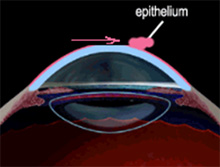Have you ever wondered why your ears pop when you fly on an airplane? Or why, when they fail to pop, you get an earache? Have you ever wondered why the babies on an airplane fuss and cry so much during descent?
Ear problems are the most common medical complaint of airplane travelers, and while they are usually simple, minor annoyances, they occasionally result in temporary pain and hearing loss.
The Ear and Air Pressure
It is the middle ear that causes discomfort during air travel, because it is an air pocket inside the head that is vulnerable to changes in air pressure.
Normally, each time (or each second or third time) you swallow, your ears make a little click or popping sound. This occurs because a small bubble of air has entered your middle ear, up from the back of your nose. It passes through the Eustachian tube, a membrane-lined tube about the size of a pencil lead that connects the back of the nose with the middle ear. The air in the middle ear is constantly being absorbed by its membranous lining and re-supplied through the Eustachian tube. In this manner, air pressure on both sides of the eardrum stays about equal. If and when the air pressure is not equal, the ear feels blocked.
Blocked Ears and Eustachian Tubes
The Eustachian tube can be blocked, or obstructed, for a variety of reasons. When that occurs, the middle ear pressure cannot be equalized. The air already there is absorbed and a vacuum occurs, sucking the eardrum inward and stretching it. Such an eardrum cannot vibrate naturally, so sounds are muffled or blocked, and the stretching can be painful. If the tube remains blocked, fluid (like blood serum) will seep into the area from the membranes in an attempt to overcome the vacuum. This is called “fluid in the ear,” serous otitis, or aero-otitis.
The most common cause for a blocked Eustachian tube is the common cold. Sinus infections and nasal allergies (hay fever, etc.) are also causes. A stuffy nose leads to stuffy ears because the swollen membranes block the opening of the Eustachian tube.
Children are especially vulnerable to blockages because their Eustachian tubes are narrower than adults.
The Three Parts of the Ear
- The outer ear: the part that you can see on the side of the head plus the ear canal leading down to the eardrum.
- The middle ear: the eardrum and ear bones (ossicles), plus the air spaces behind the eardrum and in the mastoid cavities (vulnerable to air pressure).
- The inner ear: the area that contains the nerve endings for the organs of hearing and balance (equilibrium).
How Can Air Travel Cause Problems?
Air travel is sometimes associated with rapid changes in air pressure. To maintain comfort, the Eustachian tube must open frequently and wide enough to equalize the changes in pressure. This is especially true when the airplane is landing, going from low atmospheric pressure down closer to earth where the air pressure is higher.
Actually, any situation in which rapid altitude or pressure changes occur creates the problem. You may have experienced it when riding in elevators or when diving to the bottom of a swimming pool. Deep sea divers are taught how to equalize their ear pressures; so are pilots. You can learn the tricks too.
How to Unblock Your Ears
Swallowing activates the muscle that opens the Eustachian tube. You swallow more often when you chew gum or let mints melt in your mouth. These are good air travel practices, especially just before take-off and during descent. Yawning is even better. Avoid sleeping during descent, because you may not be swallowing often enough to keep up with the pressure changes. (The flight attendant will be happy to awaken you just before descent).
If yawning and swallowing are not effective, unblock your ears as follows:
- Step 1: Pinch your nostrils shut.
- Step 2: Take a mouthful of air.
- Step 3: Using your cheek and throat muscles, force the air into the back of your nose as if you were trying to blow your thumb and fingers off your nostrils.
When you hear a loud pop in your ears, you have succeeded. You may have to repeat this several times during descent.
Babies’ Ears
Babies cannot intentionally pop their ears, but popping may occur if they are sucking on a bottle or pacifier. Feed your baby during the flight, and do not allow him or her to sleep during descent.
Precautions
- When inflating your ears, you should not use force. The proper technique involves only pressure created by your cheek and throat muscles.
- If you have a cold, a sinus infection, or an allergy attack, it is best to postpone an airplane trip.
- If you have recently undergone ear surgery, consult with your surgeon on how soon you may safely fly.
What About Decongestants and Nose Sprays?
Many experienced air travelers use a decongestant pill or nasal spray an hour or so before descent. This will shrink the membranes and help the ears pop more easily. Travelers with allergy problems should take their medication at the beginning of the flight for the same reason.
Decongestant tablets and sprays can be purchased without a prescription. However, they should be avoided by people with heart disease, high blood pressure, irregular heart rhythms, thyroid disease, or excessive nervousness. Such people should consult their physicians before using these medicines. Pregnant women should likewise consult their physicians first.
If Your Ears Will Not Unblock
Even after landing you can continue the pressure equalizing techniques, and you may find decongestants and nasal sprays to be helpful. (However, avoid making a habit of nasal sprays. After a few days, they may cause more congestion than they relieve).











